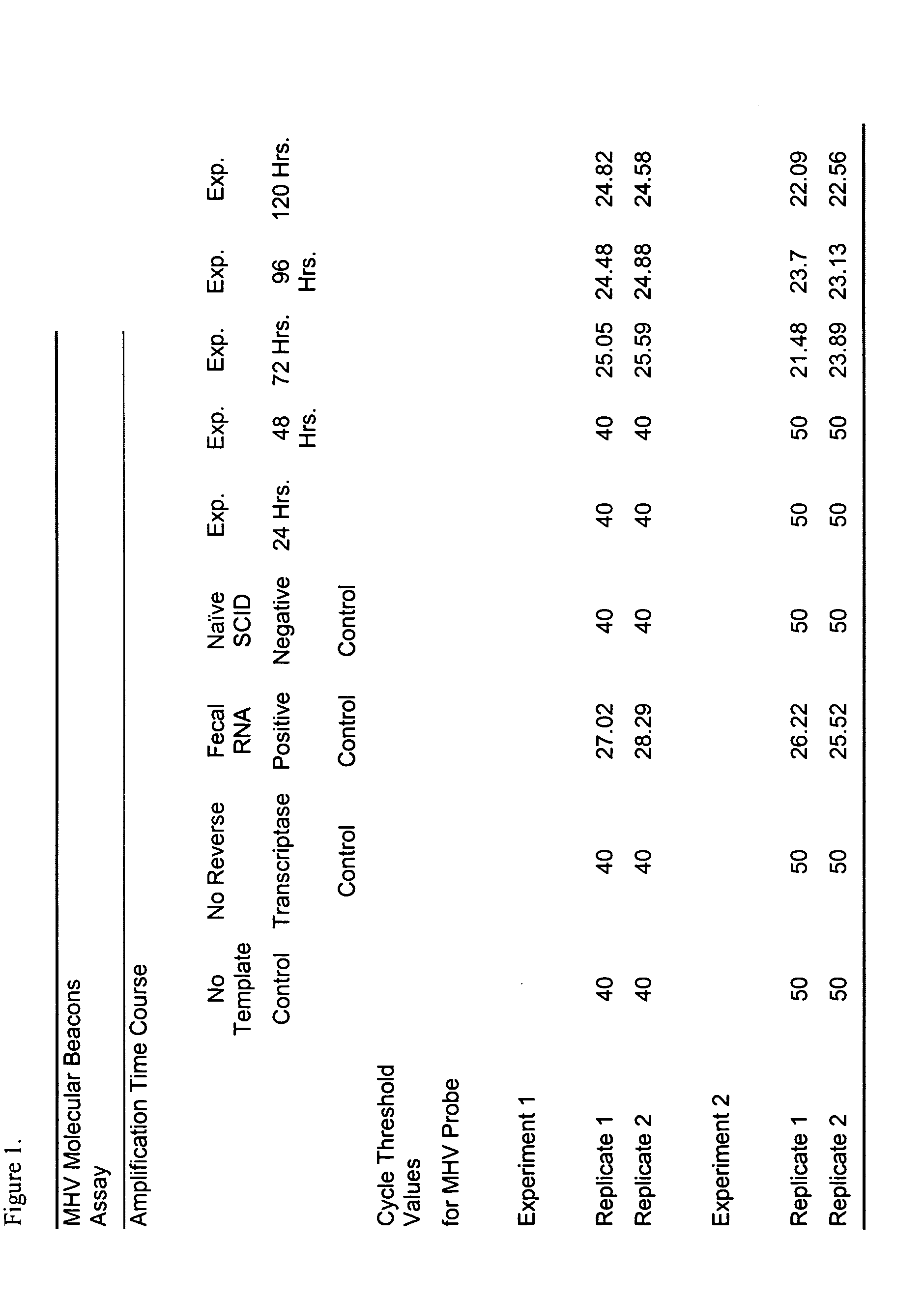Mouse hepatitis virus detection
a technology for detecting hepatitis virus and mice, which is applied in the field of mouse hepatitis virus detection, can solve the problems of improbable detection, increased morbidity, severe acute heptatitis, and high cost of mhv outbreaks
- Summary
- Abstract
- Description
- Claims
- Application Information
AI Technical Summary
Problems solved by technology
Method used
Image
Examples
examples
The Use of the MHV Molecular Beacons Assay to Detect the Time Course of MHV Infection in Laboratory Mice
[0146] Two chronically MHV infected ICR mice were co-housed with one SCID and one naïve immunocompetent mouse for twenty-four days. At the end of this period serum was collected from the immunocompetent mouse and screened by ELISA for MHV. The test indicated that the mouse was MHV positive and based on this result the SCID mouse was assumed to be MHV positive. At the zero time point, two naive SCID mice were co-housed with the presumed MHV positive SCID. Fresh fecal samples were obtained at 24, 48, 72 and 120 hours post exposure. Two experiments were conducted independently.
[0147] Total RNA from the fresh fecal samples was isolated using a Qiagen RNeasy Micro Isolation Kit Cat. # 74103 according to manufacturer's instructions. All samples were treated with DNAse to eliminate contaminating genomic DNA in the samples.
[0148] MHV-specific sequences, present in the fecal samples, a...
PUM
| Property | Measurement | Unit |
|---|---|---|
| Thermal stability | aaaaa | aaaaa |
Abstract
Description
Claims
Application Information
 Login to View More
Login to View More - R&D
- Intellectual Property
- Life Sciences
- Materials
- Tech Scout
- Unparalleled Data Quality
- Higher Quality Content
- 60% Fewer Hallucinations
Browse by: Latest US Patents, China's latest patents, Technical Efficacy Thesaurus, Application Domain, Technology Topic, Popular Technical Reports.
© 2025 PatSnap. All rights reserved.Legal|Privacy policy|Modern Slavery Act Transparency Statement|Sitemap|About US| Contact US: help@patsnap.com

